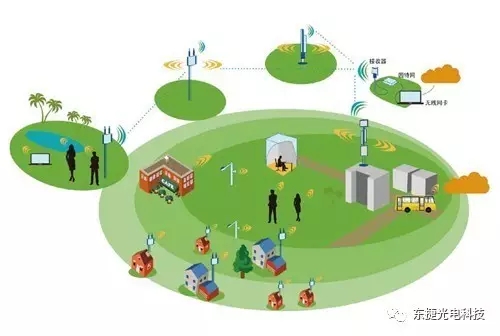
Overall, the new 2017 will continue the main trend of the wireless network industry last year, and further development. As a prelude to the arrival of 5G, it is time for the mobile network operator (MNO) to lay the foundation for the future and manage the past investment. Densification, virtualization and optimization are the main approaches for mobile network operators to reach their goals. At the same time, network convergence will also play a key role in the future 5G network as a new trend.
Densification
The overall shift in the wireless network industry is the shift from cellular base towers to street poles, from large facilities to miniaturized devices. Densification adds more sites to urban streets and large buildings with user concentration. Therefore, the deployment of urban cellular base will still be highly concerned. I think this kind of deployment will increase significantly in 2017.
In addition, the indoor wireless network market will continue to transform from the mode of operator investment to the mode of enterprise investment. Although it is not the first mention, but the market is indeed in the process of transformation. At present, the main challenge of transformation is how to make mobile network operators and enterprises to reach consensus on roles and responsibilities, deployment quality and other related aspects. CommScope will continue to deepen the partnership network, wireless network needs to better serve customers.
In addition, densification also adds more spectrum to existing sites. For the macro base station antenna, we will continue to deploy more ports (up to 8, 10 or 12 ports) on the antenna to push more capacity to the existing site. Therefore, to 4.310 size connector evolution is very important. After that the industry is now exploring the millimeter wave spectrum in fixed wireless access network play a role.

Virtualization
Everything in the wireless network is moving towards virtualization. The first step is to deploy virtualization capacity centralized wireless access network (CRAN), it will be included in the centralized location of baseband processing can serve multiple cellular sites. A US mobile network operator has been important in the city center area CRAN connecting three deployment, macro sites and 30 urban cellular sites through optical fiber. The future, the deployment will achieve real CRAN, namely CloudRAN, so that the network capacity can be at any time of the day to the mobile hotspot location.
Due to the reduction of the required equipment on the network edge, the C - RAN architecture enables operators to use smaller cabinets and platforms at the bottom of the cellular tower. In order to meet the market demand, to provide the installation with CommScope preassembled steel cabinet and generator platform. Mobile network operators will be likely to reduce part of the cost through lower power requirements and rental costs in the C RAN mode.

optimization
Operators are still highly concerned about improving user experience, and how to optimally use the open spectrum is an urgent problem to be solved in 2017. The first step is the most basic to Wi Fi offload traffic, but this does not allow mobile network operators to obtain the desired quality control. And the access of LTE on the open spectrum and the assistance access on the proprietary spectrum make it possible for operators to control the open spectrum. Mobile network operators can not only get the benefits of offloading traffic, but also control the experience. In my opinion, eventually there will be Wi Fi and other proprietary technology and spectrum of open spectrum on the three coexist, especially in the interior of the building. It can be said that managing spectrum will be the focus of the industry in order to minimize the network performance problems.
Network convergence
In the long run, network convergence is not only a new trend, but also a hot topic in the past 10 years. Despite the commonplace, network convergence will play a real role in future 5G networks. Network integration means wired and wireless network integration, to provide the best service for users. Optical fiber network will carry more wireless network traffic and expand from core network to network edge. And the last mile application will be a wireless loop or fiber loop, and millimeter waves will compete with fiber for a shorter distribution loop in RAN. Compared with optical fiber networks, users prefer wireless networks, but the combination of customers from the edge of the network to the core will be the combination of microwave, millimeter wave wireless networks and optical fiber.
Although densification, virtualization, optimization and network convergence are not entirely new trends, in 2017, these four trends will be further deepened, including the deployment of more cellular sites, capacity, spectrum and fiber resources. All the time, the key word for the wireless network industry is "more": users want more bandwidth, mobile network operators need more capacity, and Kang Puzheng is in the forefront of the industry to develop more solutions. Although the overall trend of 2017 looks similar to that of last year, it is expected to make significant progress in laying a foundation for 5G this year.

 Virtualization
Virtualization optimization
optimization